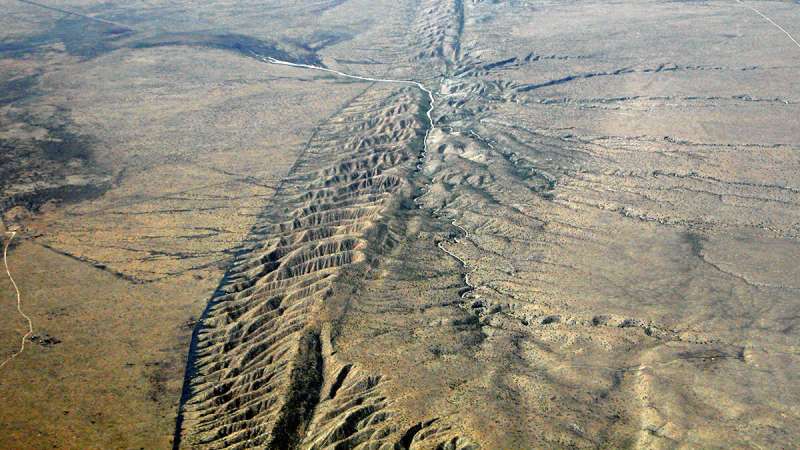What fault surface features can tell us about future earthquakes

Earthquakes cannot be forecast like weather, but fault line characteristics, such as structural maturity, can give hints about how a future earthquake may act. Structural maturity is related to the age of the fault, but especially important is its "experience," how much a fault has developed and changed over time and activity.
Mature and immature faults generate very different earthquakes. Mature faults release less stress, but their rupture propagates quickly down their length, whereas immature faults create high-energy, slower quakes. A quick assessment of a fault's maturity will help scientists better understand the risks they pose to nearby communities.
A new study seeks to quantify faults' maturity into a useful metric to help assess earthquake risks. Manighetti et al. measured surface features of fault lines that previous studies had evaluated at several maturity levels. They then analyzed their measurements to see how they related to the maturity judgment.
The researchers found that corrugation (i.e., undulation) and step-overs were good maturity indicators. Immature faults were reliably shorter, with high corrugation and high step-over density. As faults matured, they lengthened and smoothed out, reducing undulations and step-over density.
These traits are not only reliable across faults; they are also detectable at low resolutions. Scientists can map as little as a third of a fault's length at relatively low resolution and still generate an accurate assessment of a fault's maturity. This means that these metrics are practical for models and hazard assessments. Applying neural networks to the mapping process would make this method even easier, according to the authors.
More information: I. Manighetti et al, Fault Trace Corrugation and Segmentation as a Measure of Fault Structural Maturity, Geophysical Research Letters (2021). DOI: 10.1029/2021GL095372
Journal information: Geophysical Research Letters
Provided by American Geophysical Union
This story is republished courtesy of Eos, hosted by the American Geophysical Union. Read the original story here.



















